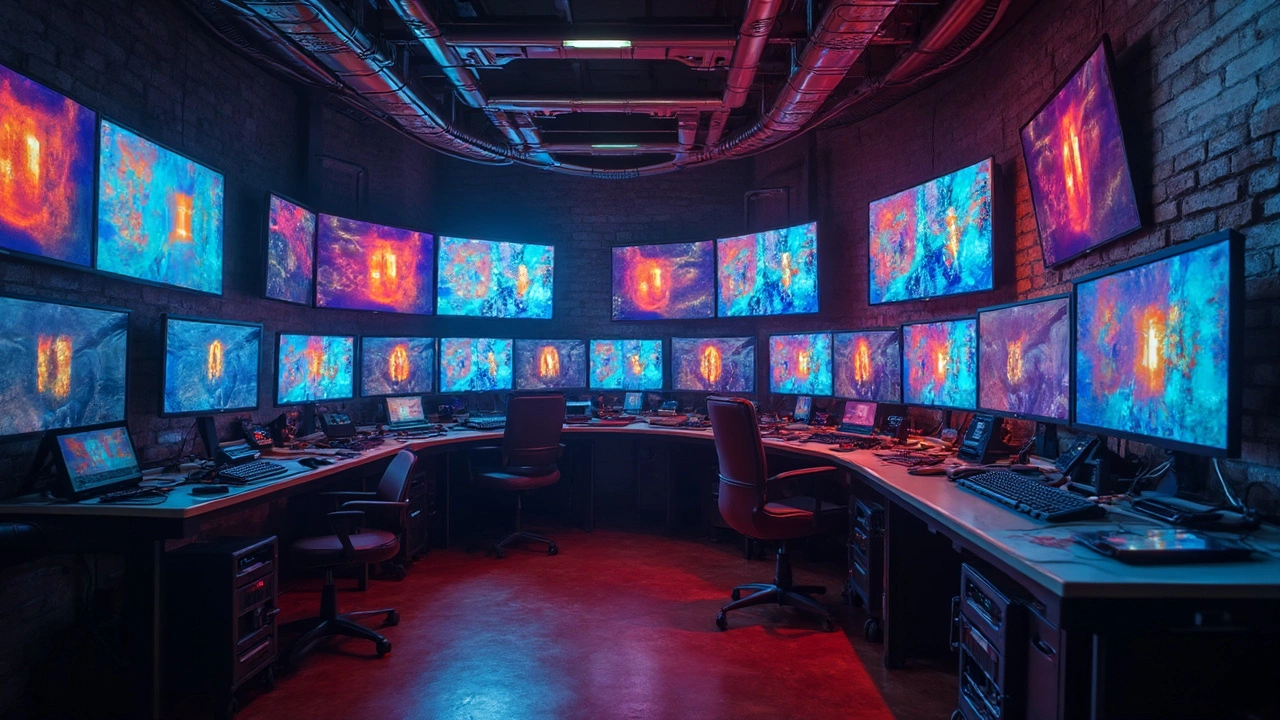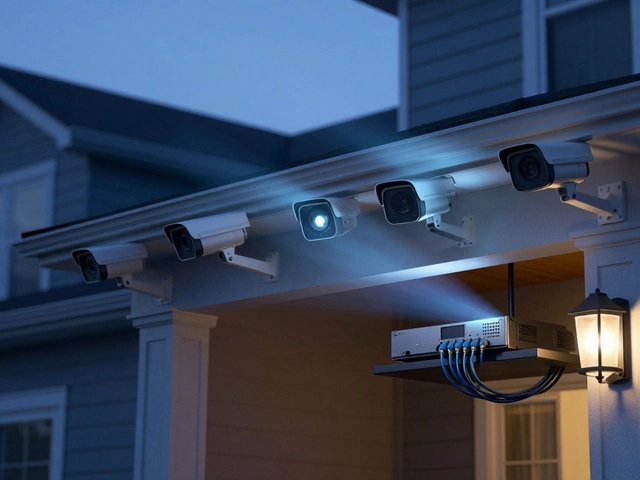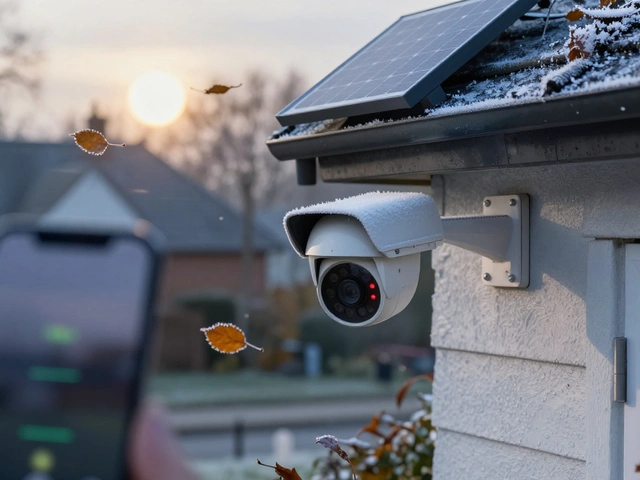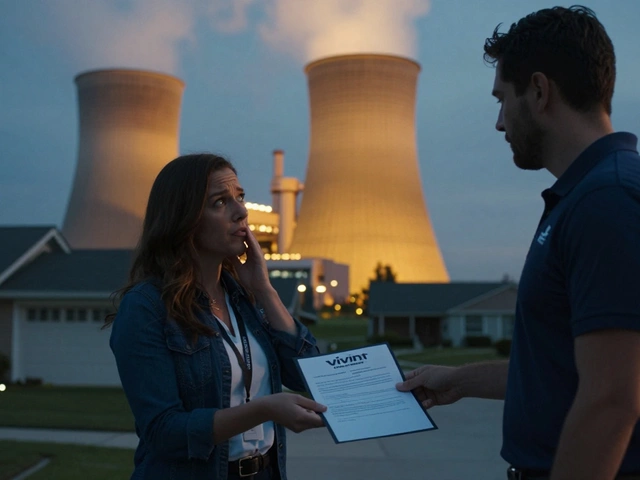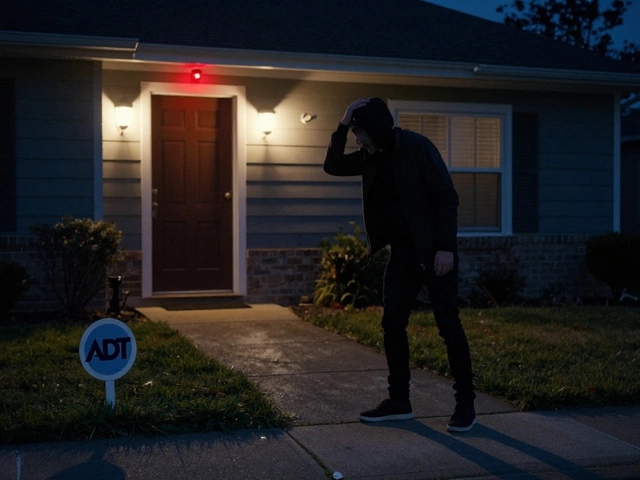So, the big question on everyone's mind: can thermal cameras actually see through walls? The short answer is no, but there's more to it than just a one-word reply. Thermal imaging is all about detecting heat, and while that sounds cool, it doesn't mean it can peek through solid objects like walls.
Here's the scoop: thermal cameras detect infrared radiation, essentially the heat that objects emit. When you point a thermal camera at something, it picks up those heat signatures, which is why they are great for night vision. But walls, being solid barriers, don't emit heat from the other side to be detected. So, even with high-tech thermal imaging, you're not going to get X-ray vision through those bricks.
Still, these cameras are incredibly handy for other situations. Firefighters use them to spot hot spots in fires, and they're great for detecting heat leaks in homes. Understanding where they excel and where they hit a wall (pun intended) can really help in deciding where to use them effectively.
- Understanding Thermal Imaging
- How Thermal Cameras Work
- Why Thermal Cameras Can't See Through Walls
- Practical Uses of Thermal Imaging
- Myths and Misconceptions
- Choosing the Right Thermal Camera
Understanding Thermal Imaging
Let's get into the nitty-gritty of thermal cameras and how they work their magic. At the core of thermal imaging technology is its ability to detect infrared radiation, which is essentially the heat emitted by objects. Everything around you gives off thermal energy, and the hotter something is, the more intense the infrared radiation it emits.
Now, unlike visible light, infrared radiation isn't something our eyes can pick up. This is where thermal cameras come in handy. They translate thermal radiation into a viewable image that shows temperature variations as different colors or shades, allowing us to see what's hot and not. We're talking about a fascinating bit of tech here that's been a game-changer in a bunch of fields, from law enforcement to building inspections.
Breaking Down the Technology
Let's talk about how these cameras actually work. They come equipped with specialized sensors that can detect infrared radiation and convert it into electrical signals. These signals are then processed to create what's called a thermogram, which is essentially the image you see on the screen that represents heat data.
Why is this useful, you ask? Well, this ability to see heat signatures means thermal imaging is invaluable in conditions with limited visibility, like smoke-filled environments or total darkness. It's like giving someone night vision, but instead of light, it uses heat.
Fun Facts and Stats
- Thermal cameras can detect temperature differences as minute as 0.1 degrees Celsius. That's insanely precise!
- Used not just for night vision, they also excel in spotting energy losses due to poor insulation in homes. An all-purpose tool, truly.
| Field of Application | Common Use |
|---|---|
| Firefighting | Locating hot spots and victims in low visibility |
| Medical | Diagnosing fever or inflammation locations |
| Law Enforcement | Surveillance and search operations |
With all this cool tech behind it, knowing when and where to use a thermal camera can make all the difference in tackling night vision challenges or efficiency problems at home. Remember, while they offer a unique view of the world, they're not going to give you the superpowers to look through walls.
How Thermal Cameras Work
Thermal cameras are like heat detectives, sniffing out temperature variations to create a visual map that showcases these differences. They use infrared sensors to detect the heat emitted by objects, whether they're warm, like a human body, or cooler, like a concrete wall.
Detecting Infrared Radiation
Every object emits some level of infrared radiation, depending on its temperature. This is where thermal cameras step in. They capture this radiation using a special sensor array and convert it into an image that we can see. Pretty neat, right? The color differences in the image represent varying temperatures, helping us identify hot spots and cool zones—super handy for night vision applications.
The Core Technology
- Infrared Detector: The heart of the camera that gathers infrared radiation.
- Microbolometer: A common type of sensor in these cameras, which detects heat. It’s small and sensitive, perfect for reading heat signatures accurately.
- Image Processing Unit: Once the radiation is detected, this unit translates it into a visual format, creating the thermal image we see on the screen.
Common Applications
While they can't look through walls, these bad boys are still powerhouses in various fields:
- Building Inspections: Spotting heat leaks and insulation issues.
- Medical Diagnostics: Detecting abnormal heat patterns associated with fever or inflammation.
- Search and Rescue: Finding missing persons by detecting their body heat.
Thermal cameras play an essential role in modern technologies and day-to-day problem solving. Whether it's for safety, comfort, or efficiency, understanding how they work can really shed some light on their usefulness.
Why Thermal Cameras Can't See Through Walls
First things first: let's get into why thermal cameras just can't peek through solid walls, despite what some might think. It all comes down to how these cameras work. They operate by detecting infrared radiation, which is basically emitted heat. They're not like X-rays that can pass through objects. Instead, they can only pick up surface temperatures.
So, when you're looking at a wall, a thermal camera can only capture the heat signature of the wall's surface. Even if there's a heater blazing behind the wall, the camera won't be able to tell because the solid material blocks the infrared radiation from reaching the other side.
Surface Temperature Variations
That said, thermal cameras are pretty good at detecting temperature variations on a surface. For example, if there's poor insulation in a wall, you might see cooler or warmer patches indicating where heat is escaping or coming in. This quality makes them invaluable for things like energy audits or spotting leaks.
Misunderstandings and Myths
It's not uncommon for folks to think thermal imaging has superpowers, but it's crucial to understand its limits. It can't see through glass, water, or, of course, walls. Knowing this can save you a lot of headaches (and possibly money) if you were considering using thermal cameras for more than they're cut out for.
If you're curious about what a thermal camera can do, they excel in detecting surface temperature changes, making them perfect for outdoor surveillance, finding animals in thick brush, or even detecting water damage under a carpet.
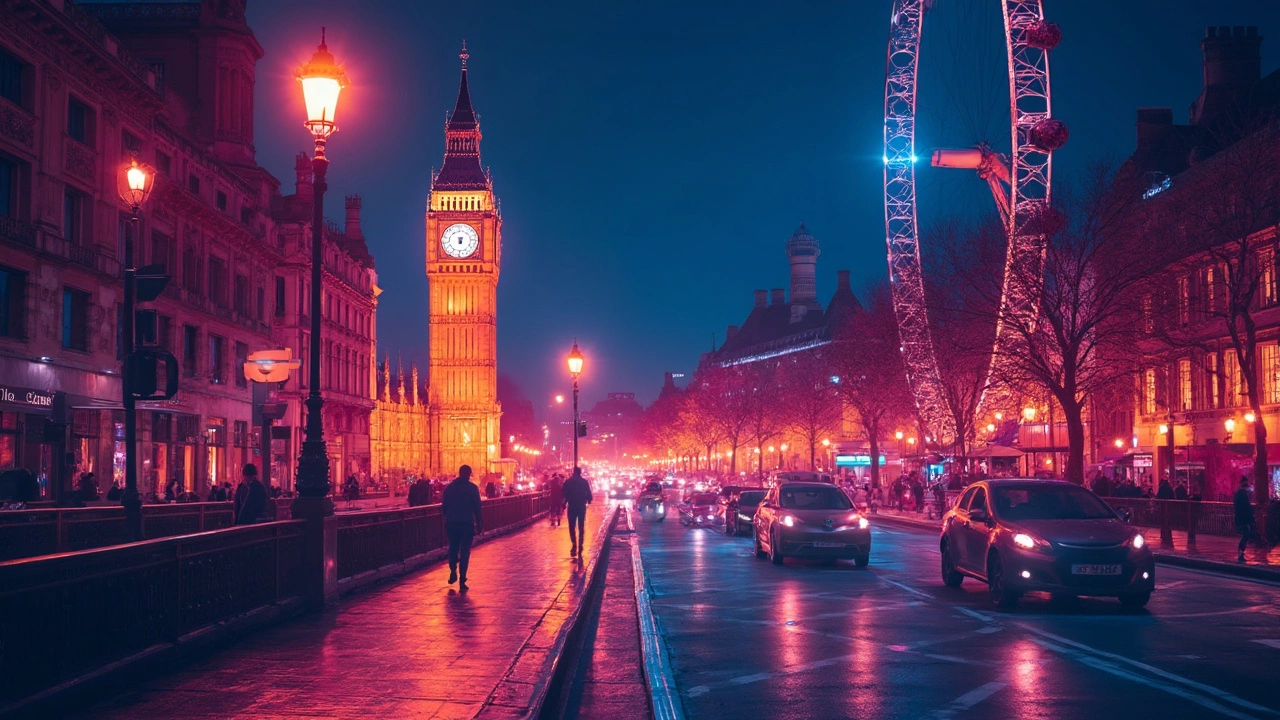
Practical Uses of Thermal Imaging
Okay, so thermal cameras might not let you spy through walls, but they're still pretty amazing gadgets with tons of practical uses. These handy devices can transform how we see the world, especially when visibility isn't great.
Firefighting and Rescue Operations
One of the top uses of thermal cameras is in firefighting. By identifying the hottest areas in a burning building, firefighters can prioritize where to aim their efforts. It helps in locating people trapped during a rescue mission too. With thick smoke, regular visibility is a no-go, but thermal imaging steps right in.
Home and Building Inspections
People love these cameras for finding heat leaks in homes. Whether it's spotting poor insulation or identifying issues with your HVAC system, thermal imaging can save some serious bucks on energy bills. Think of it as a way to keep your house snug and efficient.
Wildlife Observation
Ever wonder what animals are up to when it's pitch black outside? Wildlife observers and researchers use thermal cameras to track animals without disturbing them. The fact that these devices don't need light makes them great for nocturnal studies.
Electrical and Mechanical Troubleshooting
If you're in maintenance, these cameras are your best friend. By identifying overheated components, they help catch problems before they escalate. Imagine locating a failing bearing in a motor or a faulty connection without tearing everything apart.
Security and Surveillance
Think nighttime security setups. Thermal cameras come into play by detecting intruders when the sun's down. Their ability to spot warm bodies in low-light conditions makes them essential for robust security plans.
As you can see, while these cameras can't grant superhero-level vision, they sure do make you feel a bit like a hero in the right situations!
Myths and Misconceptions
It's funny how many folks think thermal cameras can act like those sci-fi gadgets you see in movies, able to see through walls and all. Thermal imaging definitely has some impressive uses, but believing it can give you X-ray vision is a bit off the mark.
Myth 1: See-Through Capabilities
One of the biggest myths is that these devices can see through walls. The reality? Most materials, like concrete or wood, block infrared radiation. So, a thermal camera primarily reads the surface temperature of the visible side of the wall, not what's behind it. No sneaky spying through thick walls here!
Myth 2: Detecting Invisible Objects
Some folks think if something's hidden, like a stash of cash in a wall, a thermal camera will spot it. This isn't really the case. Unless the hidden object changes the surface temperature significantly, it won't show up. What a thermal camera is good for, though, is finding unexpected heat sources like overheating wires.
Myth 3: Night Vision is Unlimited
Another misconception is that night vision cameras with thermal imaging can see in all darkness equally well. Yes, they work great in low-light or smoky environments since they detect heat, not light. But distance and environmental conditions can affect their performance. A camera might not detect a cool object far away on a chilly night.
| Common Myths | Truth |
|---|---|
| Thermal cameras see through walls | No, they read surface temperature |
| Can detect hidden objects effortlessly | Only if there's a notable heat difference |
| Perfect night vision under all conditions | Performance varies with environment and distance |
Understanding these truths can save you from expecting miracles. Thermal cameras are fantastic tools, but knowing their limits can keep your expectations in check. They’re perfect for specific uses, like finding drafts or helping in rescue operations, but not for busting myths seen on TV.
Choosing the Right Thermal Camera
Navigating the world of thermal cameras can feel like standing in a gadget shop with a million choices. But worry not, picking the right one doesn’t have to be stressful. It really boils down to understanding your needs and matching them to the specs that work for you.
What's Your Purpose?
First off, think about why you need a thermal camera. Are you a home inspector looking for leaks or a wildlife enthusiast tracking critters at night? Different uses demand different capabilities. For example, a higher resolution might be necessary for precise building inspections while a lightweight, portable camera could be ideal for camping adventures.
Important Camera Features
- Resolution: This is like your TV screen resolution. More pixels mean clearer pictures. Basic models might have 80x60, but if you need serious detail, go for at least 320x240.
- Temperature Range: Make sure the camera can handle the temperature extremes you’ll face. Some handle -20°C to 400°C, perfect for most scenarios.
- Battery Life: Depending on your usage, long battery life could be crucial. Look for cameras that offer solid hours of operation.
- Display: Some thermal cameras have built-in screens. Bigger, brighter screens can be a plus for easy viewing.
Tech Considerations
Connectivity is a buzzword today. Many newer models feature Wi-Fi or Bluetooth connectivity, allowing quick sharing of images or integration with apps for further analysis. Also, consider whether the camera is rugged enough for your environment—durability is key if you’re outdoors often.
Budget Insights
Last but not least, your budget impacts your choice. While entry-level models can cost under $500, professional-grade cameras could stretch into several thousand dollars. A smart approach is deciding what features you can't live without and then looking for models that fit those needs financially.
Here's a simple comparison of popular cameras:
| Model | Resolution | Temperature Range | Price Range |
|---|---|---|---|
| Flir ONE Pro | 160x120 | -20°C to 400°C | $400 - $500 |
| Seek Thermal Compact | 206x156 | -40°C to 330°C | $250 - $350 |
| Fluke Ti300+ | 320x240 | -20°C to 650°C | $3000 - $4000 |
In the end, the perfect thermal camera matches your specific needs and fits snugly into your budget. Take your time researching, and maybe give your short-list a test run if possible—it’ll be worth it.

